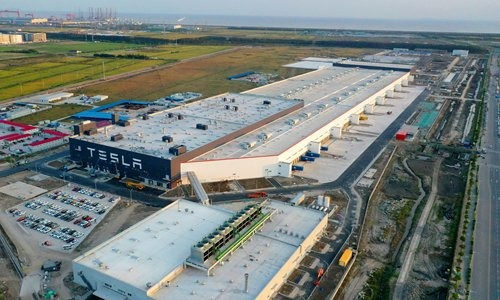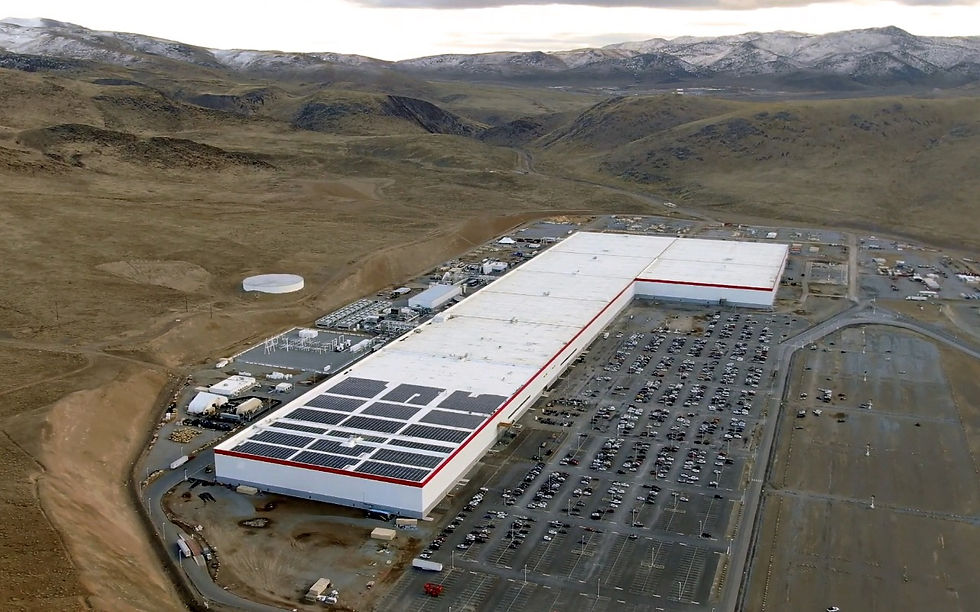Tesla’s gigafactory: the most ambitious segue into sustainable energy yet?
- Eureka WSRC
- Sep 21, 2021
- 4 min read
Updated: Sep 27, 2021
Sustainable energy has become somewhat of a cliche nowadays; with the term being reserved for the tech expos and the conglomerate conferences of the world. A certain company; notorious for innovation and pushing bewildering product designs, has once again stepped up to face the enviable task of pushing alternative energy sources to the mainstream.
Tesla’s brainchild, named Gigafactory, is derived from the word 'Giga,' the unit of measurement representing “billions.” The prefix also aptly captures the enormous leap into sustainable energy the gigafactory represents, breathing life into an industry that has remained in limbo for the better part of a decade.
The gigafactory, a 20 GWh producing, 1.9 million square feet occupying gargantuan is in essence, a simple battery, which will one day be tasked with producing around 60% of all lithium-ion batteries produced in the world; along with making cells and drivetrain for the company’s hugely successful Model 3.

So how does it work?
CEO Elon Musk has called the Gigafactory a “machine that builds the machine.” It’s a one-size-fits-all factory that, ideally, could make anything Tesla sells: batteries, solar panels, home storage solutions, and, of course, electric cars; all under one roof.
By tapping into mostly rudimentary; secondary school chemistry, the conglomerate has unleashed a power source that operates on the premise of allowing photons, or particles of light, to knock electrons free from atoms, generating a flow of electricity. The humble solar panel, which comprises of many photovoltaic cells; that are responsible for the creation of electric fields by the separation of opposite charges, is a mainstay in the powerplant.
Add in around 200,000 or so units of these panels, you’ll be looking at the largest rooftop solar array in the world.
Efficiency is the name of the game in and around the tesla gigafactory. The Gigafactory is a production system designed to put as much energy back on the grid as it takes. Further, it's also designed not to pollute air, ground, or water. This carbon neutral, nonpolluting approach is so transformational that for much of manufacturing history, it has been considered impossible. For example, high-energy manufacturing processes that would normally be powered by natural gas have been redesigned to avoid fossil fuels by maximizing energy efficiency. Replacing crude and industrial-era hydrocarbons with hydroelectric and solar panels, the former which derives its energy from a power source (falling water) is used to turn a propeller-like piece called a turbine, which then turns a metal shaft in an electric generator, which is the motor that produces electricity.
Elsewhere, waste heat from equipment like compressors or high-temperature ovens can be used both to run the equipment efficiently and to help keep the factory warm in the winter. To combat the scorching Nevada heat, which would prove detrimental to the operation of the high-tech; $2 billion- valued infrastructure, Tesla has designed a unique chilled water plant that makes use of the desert climate: When the air is cool at night, the plant generates more chilled water than needed, and that extra water can be used during the day. The system, which uses one of the largest thermal storage tanks in the world, will cut electricity used in the process by up to 40%, and cut water consumption up to 60%.
In parts of the manufacturing process that require dry air, the factory can pull in desert air to reduce the use of dehumidifiers. By eliminating the need for such an energy intensive process, the building can save 144 megawatt-hours of energy in a month, while producing a whopping estimate of 35 kWh ; more than every other automaker in the world - combined.
In emphatic tesla-esque fashion, the power saved every month is the equivalent, the company says, of the energy needed to drive a Model S 480,000 miles; or 20 times around the circumference of the planet we call home.

So what does the future hold?
The most conservative estimates peg that the earth will run out of fossil fuels within the next century or so. The sun however, has a good 5 billion years or so left in it's legs (provided civilization makes it that far). Alternative energy sources, as mentioned before, have long been a talking point of various technology summits and action plans; but have never materialized into worthwhile replacements for the hydrocarbons which we know and love.
Serial innovator Elon Musk has said that it would take 100 Gigafactories across the globe to run the entire world on sustainable energy.
However, he also noted that Tesla alone can’t build that many.
Instead, he said he wanted to inspire other companies to follow his lead — similar to the shift Tesla helped inspire with its electric cars. But given Mr.Musk’s influence and ideology; it can safely be assumed that the rest of us will be keen to adopt his polarising ways.
Fortunately for the tech titan, Musk’s hopeful rally call for building a hundred or so Gigafactories seems not too far a distant reality; as the recent expansions taking place in the most accomplished factories in Nevada and Shanghai suggest a renewed interest in alternative energy to power a post-pandemic world. A planned 460,000 square-meter expansion in the Shanghai Gigafactory is penned to facilitate production of the first $25,000 automobile from the conglomerate, which would be a welcome move to fulfill Musk’s prophecy which aims to provide renewable energy for all. Further work on the Nevada site certainly seems that the mythical 100 gigafactory number is not many moons away.
Shiva Tejas Mukesh







Comentários